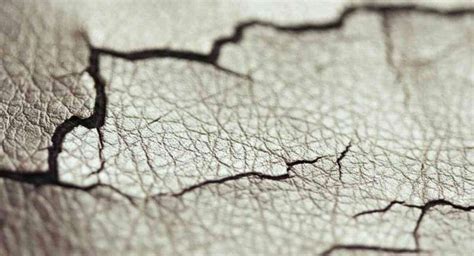How To Prevent Leather From Cracking: A Comprehensive Guide
Why Does Leather Crack?
Leather, a natural material, is susceptible to cracking, especially when exposed to harsh conditions. Understanding the reasons behind leather cracking is crucial in preventing it.
Here are some common causes of leather cracking:
- Dryness: Leather is naturally porous and absorbs moisture. When leather dries out, it becomes brittle and prone to cracking. This can be caused by low humidity, exposure to heat, or insufficient conditioning.
- Sun Exposure: Ultraviolet (UV) rays from the sun can damage the fibers in leather, causing it to fade, weaken, and crack.
- Chemicals: Exposure to harsh chemicals, such as cleaning products or solvents, can damage the leather’s surface and lead to cracking.
- Stress and Strain: Repeated folding, bending, or stretching can weaken the leather fibers, making them more susceptible to cracking.
- Improper Storage: Storing leather items in humid environments or exposing them to dust and dirt can cause cracking over time.
- Age: Like most materials, leather degrades over time. As it ages, it becomes more brittle and more likely to crack.
Knowing the reasons behind leather cracking can help you take preventative measures to protect your leather items. By understanding these causes, you can extend the lifespan of your leather goods and keep them looking their best for years to come.
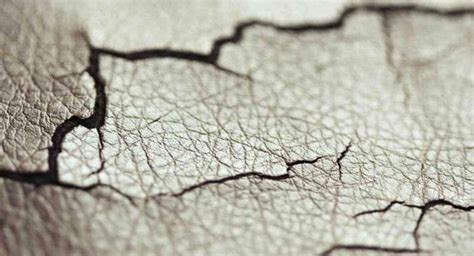
What Are The Best Leather Conditioners For Preventing Cracks?
Leather conditioners are essential for preventing cracking and keeping your leather items supple and hydrated. These conditioners nourish the leather, restoring its natural oils and moisture, promoting its longevity. However, choosing the right conditioner is crucial.
Here’s a guide to help you select the best leather conditioner for your needs:
- Oil-Based Conditioners: These conditioners are ideal for dry and cracked leather, as they penetrate deep into the leather fibers and provide intense hydration. They are often formulated with natural oils like mink oil, neatsfoot oil, or lanolin.
- Wax-Based Conditioners: Wax-based conditioners create a protective layer on the leather’s surface, preventing moisture loss and protecting it from external elements. They are suitable for all types of leather and provide a shine to the leather.
- Silicone-Based Conditioners: Silicone-based conditioners create a temporary water-resistant barrier on the leather’s surface, making them useful for protecting leather from spills and stains. However, they do not penetrate the leather as deeply as oil-based conditioners.
Remember to always test any conditioner on a hidden area of the leather before applying it to the entire surface.
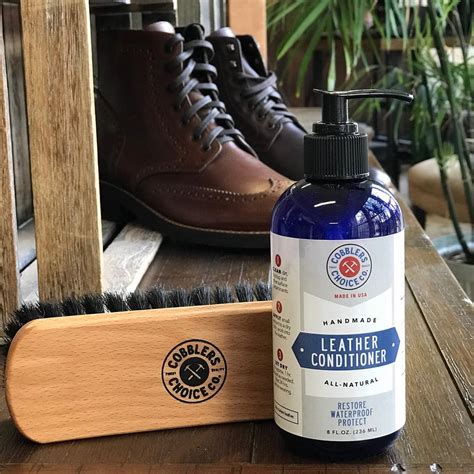
How Often Should You Condition Leather?
The frequency of leather conditioning depends on several factors, including the type of leather, its age, and its usage.
Here’s a general guideline for conditioning your leather items:
- New Leather: Condition new leather items once or twice a year to prevent them from drying out.
- Regularly Used Leather: Condition leather items used frequently, such as handbags, belts, or jackets, every 3-4 months.
- Older Leather: Condition older leather items more frequently, perhaps every 1-2 months, as they may be more prone to drying out.
Always follow the instructions on the leather conditioner’s label for the recommended frequency of application.
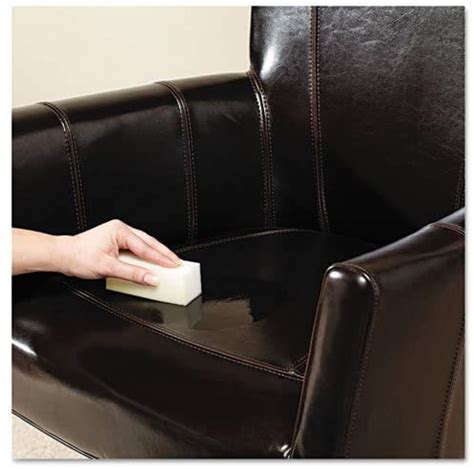
Can You Prevent Cracking With Home Remedies?
While commercial leather conditioners are effective, several home remedies can help prevent leather from cracking. These natural solutions are often readily available and can be more budget-friendly.
Here are some home remedies that may help prevent leather cracking:
- Olive Oil: Olive oil is a natural moisturizer that can help restore the moisture to dry leather. Apply a small amount of olive oil to a clean cloth and rub it gently into the leather surface.
- Beeswax: Beeswax forms a protective layer on the leather, preventing moisture loss and protecting it from the elements. You can find beeswax-based leather conditioners at craft stores or online.
- Coconut Oil: Coconut oil is another natural moisturizer that can be used on leather. Apply a small amount of coconut oil to a clean cloth and rub it gently into the leather.
Always remember to test any home remedy on a hidden area of the leather before applying it to the entire surface.
Can I Prevent Cracking With Leather Conditioner?
Leather conditioner is a crucial tool in preventing leather from cracking. These conditioners are designed to nourish the leather, restoring its natural oils and moisture, promoting its longevity. Conditioning helps maintain the flexibility and suppleness of the leather, preventing it from becoming brittle and cracking.
Here’s how leather conditioners prevent cracking:
- Hydration: Conditioners infuse the leather with moisture, replenishing its natural oils that have been lost over time.
- Protection: Conditioners create a protective barrier on the leather’s surface, preventing it from drying out and becoming brittle.
- Flexibility: Conditioners help maintain the leather’s flexibility, preventing it from becoming stiff and prone to cracking from bending or folding.
While leather conditioners cannot completely prevent cracking, they play a vital role in minimizing its occurrence and extending the lifespan of your leather items.
What Are The Best Leather Products For Preventing Cracks?
Choosing the right leather product is crucial in preventing cracking and ensuring the longevity of your leather goods.
Here are some tips for selecting leather products that are less prone to cracking:
- Full-Grain Leather: This type of leather is the most durable and resistant to cracking, as it has not been sanded or treated. It is also known for its unique character and natural beauty.
- Top-Grain Leather: Top-grain leather is similar to full-grain leather but has been sanded to remove imperfections. It is still relatively durable but may be slightly less resistant to cracking than full-grain leather.
- Aniline Leather: Aniline leather is treated with a dye that allows the leather’s natural grain to show through. It is known for its soft, supple feel but may be more prone to cracking than other types of leather.
- Corrected Grain Leather: Corrected grain leather has been sanded and coated with a finish to create a more uniform appearance. While it is more resistant to scratches and stains, it may not be as durable as full-grain or top-grain leather.
- Nubuck Leather: Nubuck leather is made from the top grain of the hide but is sanded to create a velvety texture. It is known for its soft feel but is more prone to staining and cracking than other types of leather.
When selecting leather goods, consider the type of leather, its intended use, and the level of care you are willing to provide.
How Can I Protect Leather From Cracking In The Summer?
Summer’s heat and humidity can take a toll on leather, making it more prone to cracking. However, several preventive measures can help keep your leather items looking their best during the summer months.
- Conditioning: Conditioning your leather items regularly is crucial in the summer. The extra moisture from the air can cause leather to dry out, so it’s important to replenish its natural oils and moisture.
- Avoid Direct Sunlight: Prolonged exposure to direct sunlight can damage leather, causing it to fade and crack. Store leather items in a cool, dry place or use a leather protector that shields them from UV rays.
- Proper Storage: Store leather items in a well-ventilated area away from direct sunlight and humidity. Avoid storing them in airtight containers, as this can trap moisture and damage the leather.
- Avoid Heat Sources: Keep leather items away from heat sources such as radiators, fireplaces, or direct sunlight. Excessive heat can dry out leather and make it more prone to cracking.
By following these tips, you can help protect your leather items from the harsh effects of summer and keep them looking their best for years to come.
How To Prevent Leather From Cracking In The Winter?
The cold, dry air of winter can also contribute to leather cracking, as it dries out the leather fibers and makes them brittle.
Here are some tips for preventing leather from cracking in the winter:
- Condition Regularly: Conditioning your leather items regularly is essential in the winter, as the dry air can easily dry out the leather. Use a high-quality leather conditioner to replenish the leather’s natural oils and moisture.
- Avoid Extreme Temperature Fluctuations: Leather is sensitive to temperature changes. Avoid exposing it to sudden temperature fluctuations, such as moving from a warm room to a cold environment.
- Store Properly: Store leather items in a cool, dry place, away from direct sunlight and heat sources. Avoid storing them in damp or humid environments.
- Use a Leather Protector: A leather protector can create a barrier on the leather’s surface, shielding it from the elements and preventing moisture loss.
By following these winter care tips, you can help prevent leather from cracking and maintain its quality and appearance.
How To Clean Leather To Prevent Cracking?
Proper cleaning is essential for maintaining the health and longevity of your leather items. It can remove dirt, dust, and debris that can clog the pores of the leather, leading to cracking.
Here’s how to clean leather to prevent cracking:
- Use a Soft Cloth: Begin by removing any loose dirt or debris from the leather surface using a soft cloth.
- Use a Leather Cleaner: Use a dedicated leather cleaner, preferably one designed for the specific type of leather you are cleaning.
- Avoid Harsh Chemicals: Avoid using harsh chemicals, such as detergents or solvents, on leather, as they can damage the leather and make it more prone to cracking.
- Test Before Application: Always test any cleaning product on a hidden area of the leather before applying it to the entire surface.
- Condition After Cleaning: After cleaning, condition the leather to replenish its natural oils and moisture.
By following these cleaning guidelines, you can ensure that your leather items are properly cleaned and protected from cracking.
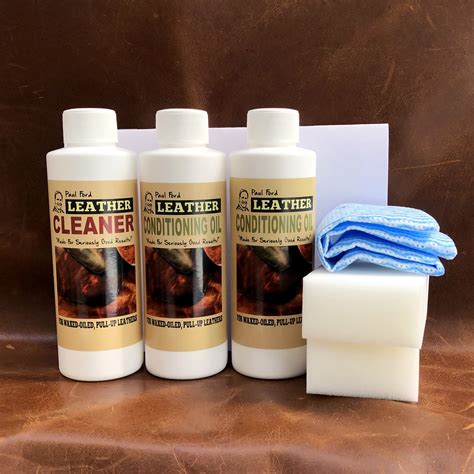
How To Repair Cracked Leather
If leather cracking occurs, repairing the damage can help extend the lifespan of your leather items.
Here are some steps on how to repair cracked leather:
- Clean the Crack: Begin by cleaning the cracked area to remove any dirt or debris.
- Apply a Leather Conditioner: Apply a high-quality leather conditioner to the cracked area, allowing it to penetrate and soften the leather.
- Use a Leather Filler: For larger cracks, use a leather filler to bridge the gap. Follow the instructions on the filler product.
- Sand and Polish: Once the filler is dry, sand it down to create a smooth surface, then polish the area to restore its shine.
If you are not comfortable repairing leather yourself, it is best to seek the services of a professional leather repair specialist.
How To Store Leather To Prevent Cracking
Proper storage plays a crucial role in preventing leather from cracking. Storing leather items in a cool, dry, and well-ventilated place can help preserve their quality and longevity.
Here are some tips for storing leather to prevent cracking:
- Avoid Humid Environments: Store leather items in a cool, dry place with low humidity. Excessive humidity can cause leather to become damp and prone to mildew and cracking.
- Avoid Direct Sunlight: Direct sunlight can damage leather, causing it to fade, weaken, and crack. Store leather items in a dark or dimly lit area.
- Use a Dust Cover: Use a dust cover to protect leather items from dust and dirt.
- Avoid Storage in Airtight Containers: Storing leather items in airtight containers can trap moisture, leading to mildew and cracking.
- Properly Hang or Fold: Hang leather garments on padded hangers to prevent creases or folds that can cause cracking. Fold leather items carefully, avoiding sharp creases.
Table Summary
| Prevention Method | Description |
|---|---|
| Regular Conditioning | Apply leather conditioner to replenish natural oils and moisture. |
| Avoid Direct Sunlight | Protect leather from UV rays to prevent fading and cracking. |
| Proper Storage | Store in a cool, dry, and well-ventilated place, avoiding humidity and heat. |
| Use a Leather Protector | Create a barrier on the surface to shield from elements and moisture loss. |
| Avoid Harsh Chemicals | Use leather-specific cleaners and avoid harsh chemicals that can damage the leather. |
| Clean Regularly | Remove dirt, dust, and debris to prevent clogging pores and cracking. |
| Avoid Extreme Temperature Fluctuations | Protect from sudden changes in temperature to prevent cracking. |
| Choose Quality Leather | Select full-grain or top-grain leather for durability and resistance to cracking. |
FAQs
What are some signs of leather cracking?
Signs of leather cracking can include small lines or fissures on the surface, deeper cracks that can extend through the leather, and a dry, brittle texture.
What is the best way to remove dirt from leather?
Use a soft cloth or a dedicated leather cleaner to gently remove dirt and debris from the surface of the leather. Avoid using harsh chemicals or scrubbing, which can damage the leather.
Can I use petroleum jelly on leather?
While petroleum jelly can temporarily moisturize leather, it can also clog pores and trap moisture, leading to mildew and damage. It’s not recommended for long-term leather care.
How do I know if my leather is dry?
You can tell if your leather is dry by looking for signs of cracking, stiffness, or a dull appearance. You can also try gently bending the leather; if it feels brittle or cracks, it’s likely dry.
Is it okay to use leather conditioner on all types of leather?
No, not all leather conditioners are suitable for all types of leather. It’s essential to check the product’s label and select a conditioner designed for the specific type of leather you are treating.
What is the difference between leather conditioner and leather oil?
Leather conditioner is a blend of oils, waxes, and other ingredients that nourish and protect leather. Leather oil, on the other hand, is primarily composed of oil, which helps to moisturize and soften the leather.
How can I tell if my leather is damaged beyond repair?
If the leather has deep cracks or tears, it’s likely beyond repair. You might consider seeking the advice of a professional leather repair specialist for assessment.

